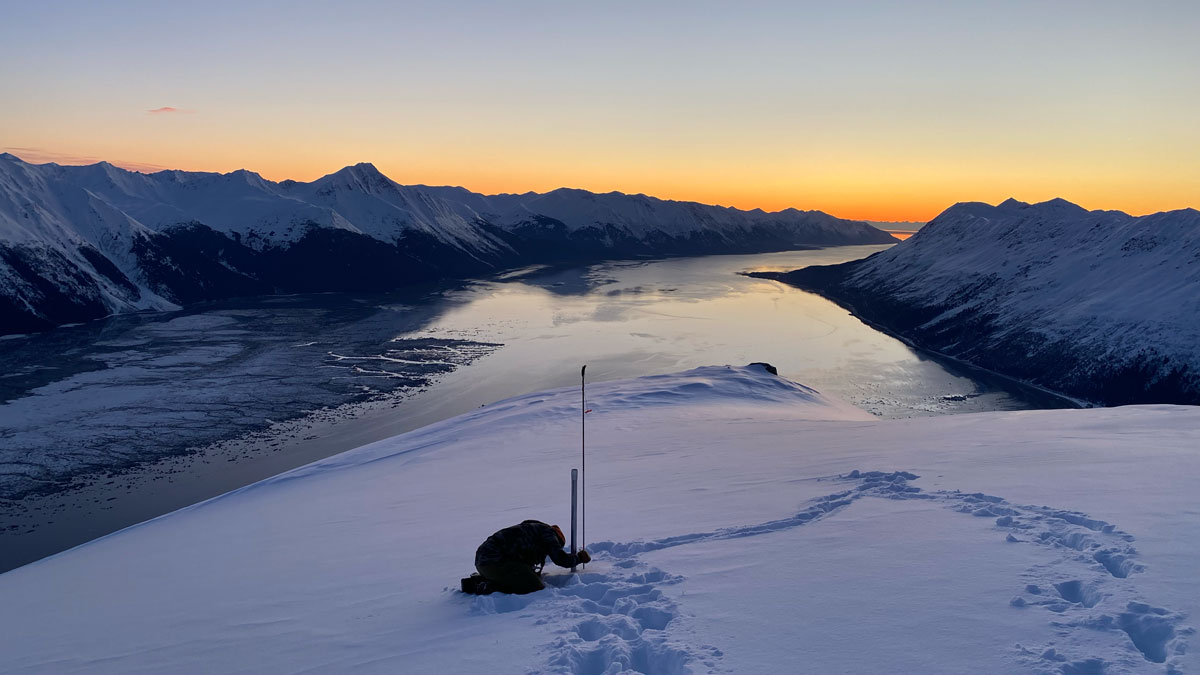Scientists have developed a new way to measure how much water is stored in mountain snow, potentially helping both water managers and climate modelers better estimate future streamflows.
Climate change’s effect on precipitation and temperature has increased the variability of mountain snowpack, said Christina Aragon, a doctoral student in water resources engineering at Oregon State University. “It kind of made us question, Could there be a new metric that helps capture that variability?”
Existing metrics, she said, estimate temporal data, such as the number of snow days in a season or the dates snow arrives and disappears. Alternatively, they measure how much snow exists at a specific location on a given day. The new metric combines the two.
Aragon and water resources scientist David Hill, also of Oregon State University, call the metric snow water storage and describe it in Hydrology and Earth System Sciences. It builds off the snow water equivalent metric, a commonly used measurement that shows how deep a pool of water would be if the snow present on a landscape melted, considering the depth and density of the snow. Snow water equivalent is estimated for a given location at a point in time and is continually monitored.
Snow water storage integrates the area under the resulting snow water equivalent curve. “It’s telling you both how much snow water is being stored, and it also encompasses how long there is snow on the landscape,” Aragon said. A user could compare different locations for a specific period or look at how the snowpack of a given day has changed over the years.
Improving Forecasts
Water managers have historically assumed that 1 April is the annual snowpack peak, she explained. They use snow depth and other measurements from this date to forecast how much melt runoff to expect in the coming seasons. But, Aragon said, during the season when snow should be accumulating, the air temperature now sometimes rises enough to cause snow to start melting. These midwinter warming events, she added, are becoming more frequent, and sometimes the snow season ends earlier than expected.
Because snow water storage integrates over time, the metric can estimate snowpack at any point, even after it’s melted, Aragon said.
University of Arizona hydrologist and atmospheric scientist Xubin Zeng, who was not involved in the metric’s development, said it will be a useful addition to the existing tools.
“The advantage is, it represents, essentially, the average snow water equivalent for the given time period.”
“The advantage is, it represents, essentially, the average snow water equivalent for the given time period,” he said. Tracking snow water storage could help water managers avoid missing changes wrought by the increased variability in snow accumulation, Zeng said.
“If you have all those abnormal variations throughout the season, then using just one peak snow water equivalent cannot catch all the variations,” Zeng said. “But if you use the integrated snow water equivalent, then you provide the more realistic representation of the average of the snowpack.”
Introducing the term “snow water storage” could have the added benefit of giving the public a better understanding of what’s being measured, Zeng noted. “We have been struggling in terms of using the term ‘snow water equivalent’ to the public. It’s just difficult for them to conceptualize.”
Both Aragon and Zeng said they see potential uses for the metric within the modeling community and for water managers.
“We’ve actually been using it to calibrate models,” Aragon said, in particular, one that researchers use to simulate how snowpack evolves through time. Aragon and colleagues compare field measurements to the snow water storage the model generates to determine whether it’s accurately capturing how much water the snowpack is storing.
Declining Snowpack
Aragon and Hill developed and tested their metric on data sets from mountainous regions they compiled from several federal agencies and the University of Arizona.
Parts of the Cascades in the Pacific Northwest are seeing “quite a dramatic” decline in snow water storage, Aragon said, partly because a greater percentage of precipitation is falling as rain instead of snow. Changes in the landscape also affect the snowpack.
“It’s a really fantastic monitoring metric.”
“Wildfire causes a whole bunch of feedback loops,” she said. Severe fire in a conifer forest replaces the Sun-blocking canopy with charred black stems. That can mean more snow reaches the ground. But, she said, it’s also likely to melt faster because of Sun exposure. An area recently logged could see similar changes.
Aragon said she hopes water managers trying to monitor the reservoir function of snowpacks over the water year will find the metric a useful addition to their existing tools.
“We would love to see this be applied, especially in places like Oregon, Washington, where we’re seeing dramatic changes in our snowpack and the ability of our snowpack to function as reservoirs,” she said. “It’s a really fantastic monitoring metric.”
—Amy Mayer (@AmyHMayer), Science Writer

